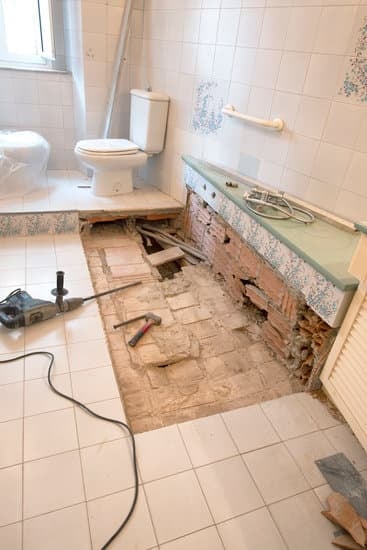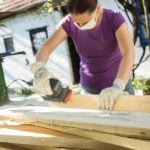Are you looking to make some upgrades to your home, but don’t have the funds upfront? If so, you may want to consider a home improvement loan. These types of loans can be a great option for homeowners who are in need of financial assistance for renovation projects. In this article, we will discuss what home improvement loans are and why they are important for homeowners.
A home improvement loan is a type of loan that is specifically designed to help homeowners with the costs associated with making improvements or renovations to their homes. Whether you are looking to renovate your kitchen, add a new bathroom, or make energy-efficient upgrades, a home improvement loan can provide the necessary funds to get the job done.
For many homeowners, these loans are an essential tool in maintaining and increasing the value of their property. As we all know, home renovations can be expensive, and not everyone has the cash on hand to cover these expenses. This is where home improvement loans come in – they provide homeowners with access to the funds needed to make these improvements without having to drain their savings accounts or retirement funds.
So how do you get a home improvement loan? Let’s dive into the details.
Types of Home Improvement Loans
When considering home improvement loans, it is essential to understand the different types available and how each one works. One popular option is a secured loan, which requires collateral such as your home or another valuable asset. Secured loans typically offer lower interest rates than unsecured loans, making them an attractive option for homeowners with significant equity in their properties.
On the other hand, unsecured home improvement loans do not require any collateral but may come with higher interest rates and stricter eligibility requirements. These loans are based solely on the borrower’s creditworthiness and ability to repay the loan.
Another category of home improvement loans includes government-backed options such as FHA Title I Property Improvement Loans or energy-efficient mortgages (EEMs). These programs are designed to help homeowners finance specific renovation projects while offering favorable terms and conditions.
Additionally, personal loans can also be used for home improvement purposes. These unsecured loans are granted based on the borrower’s credit history and income, providing flexibility and convenience for financing smaller projects.
| Loan Type | Key Features |
|---|---|
| Secured Loan | Requires collateral, low interest rates, high borrowing limits. |
| Unsecured Loan | No collateral required, higher interest rates, smaller borrowing limits. |
Finding the right type of home improvement loan depends on your financial situation, the scale of your renovation project, and your ability to meet the lender’s requirements. By understanding these different loan options available to you, you can make more informed decisions when it comes to financing your next home improvement endeavor.
Eligibility for Home Improvement Loans
When considering a home improvement loan, it is important to understand the eligibility requirements that lenders typically look for. Meeting these criteria can increase your chances of securing the funds you need for your renovation project. Here are some key factors that determine whether you are eligible for a home improvement loan:
- Credit score requirements: Lenders often look at your credit score to assess your creditworthiness. A higher credit score can make you more eligible for favorable loan terms and lower interest rates. However, there are also options available for those with lower credit scores.
- Income and employment verification: Lenders will want to ensure that you have a stable source of income to make timely repayments on the loan. This may involve providing pay stubs, tax returns, or other documentation to verify your income and employment status.
- Property appraisal and equity considerations: The value of your home and the amount of equity you have in it may play a role in determining your eligibility for certain types of home improvement loans. Lenders may require an appraisal to assess the value of the property before approving the loan.
Meeting these eligibility requirements is crucial when applying for a home improvement loan. Understanding what lenders look for can help you prepare and improve your chances of getting approved for the funds you need to enhance your living space.
How to Apply for a Home Improvement Loan
When considering home improvement projects, having a funding source is crucial, and there are various ways to secure the necessary financing. For homeowners wondering how to get a home improvement loan, it is essential to understand the application process and have all the required information and documentation ready. Here are some steps to take when applying for a home improvement loan.
Researching and comparing loan options is the first step in applying for a home improvement loan. There are different types of loans available, including secured and unsecured loans, government-backed options, and personal loans tailored for home improvement purposes. By researching these options, borrowers can determine which type of loan best suits their needs based on factors such as interest rates, repayment terms, and eligibility requirements.
Once the right type of loan has been identified, gathering necessary documents and information is the next step. This typically includes proof of income, employment verification, credit history details, and property appraisals or equity considerations. Lenders will use this information to assess an applicant’s creditworthiness and determine the amount they are eligible to borrow.
When presenting this information in a loan application, being organized and thorough is key. To increase the chances of a successful application process when seeking a home improvement loan, it’s important to pay attention to detail; ensuring that all required documents are submitted accurately can prevent unnecessary delays or complications in securing the desired financing.
| Types of Home Improvement Loans | Details |
|---|---|
| Secured vs. unsecured loans | Secured loans require collateral while unsecured do not. |
| Government-backed loan options | FHA Title I Property Improvement Loan Program offers loans up to $25k. |
| Personal loans for home improvement | This option offers unsecured funding with fixed interest rates. |
Finding Lenders for Home Improvement Loans
When it comes to finding lenders for home improvement loans, there are several options available for homeowners to consider. Whether you prefer the traditional route of visiting local banking institutions or the convenience of applying online, understanding the different avenues can help you find the best home improvement loan for your needs.
Here are some ways to find lenders for home improvement loans:
- Local Banking Institutions: Many homeowners start their search for a home improvement loan by visiting their local banks or credit unions. These traditional lenders often offer competitive rates and personalized service, making them a popular choice for those seeking financing for renovation projects.
- Online Lending Platforms: With the advent of technology, many online lending platforms now offer home improvement loans. These platforms allow homeowners to easily compare loan options, interest rates, and terms from the comfort of their own homes. Additionally, the application process is often streamlined and efficient.
- Credit Unions and Non-Traditional Lenders: Credit unions are member-owned financial institutions that may offer favorable terms and rates on home improvement loans. Additionally, non-traditional lenders such as peer-to-peer lending platforms and online financial companies also provide alternative options for securing financing.
By exploring these different avenues for finding lenders, homeowners can ensure they are getting the best possible terms and rates on their home improvement loan. As you consider your options, be sure to research each lender thoroughly and compare their offers before making a decision on which one is right for you.
Understanding Loan Terms and Conditions
When considering a home improvement loan, it is crucial to understand the terms and conditions that come with borrowing money for renovation projects. In this section, we will explore the different aspects of loan terms and conditions to ensure that borrowers are well-informed before taking out a loan.
Interest Rates and APR
One of the most important factors to consider when getting a home improvement loan is the interest rate. The interest rate will determine how much you will pay in addition to the principal amount borrowed. It’s essential to compare interest rates from different lenders to secure the best possible deal. Additionally, borrowers should also consider the Annual Percentage Rate (APR), which includes not only the interest rate but also any additional fees and charges associated with the loan.
Loan Repayment Options
Understanding loan repayment options is vital when taking out a home improvement loan. Different lenders may offer various repayment plans, such as fixed-rate loans or adjustable-rate loans. Borrowers must carefully assess their financial situation and choose a repayment option that aligns with their budget and long-term financial goals.
Potential Fees and Penalties
Before finalizing a home improvement loan agreement, it’s essential to be aware of any potential fees and penalties associated with the loan. Some lenders may charge origination fees, prepayment penalties, or late payment fees. Borrowers should carefully review the terms and conditions of the loan to avoid any unexpected costs down the line.
By understanding these crucial aspects of loan terms and conditions, homeowners can navigate their home improvement projects more confidently while ensuring they choose a loan that suits their specific needs and financial circumstances.
Using Home Improvement Loan Funds
When it comes to using home improvement loan funds, proper budgeting and planning are essential. Before embarking on any renovation project, homeowners should assess the scope of work needed and allocate the necessary funds to cover all associated costs. Proper budgeting helps ensure that the loan funds will be used efficiently and effectively, resulting in a successful home improvement project.
Budgeting and Planning
Budgeting for a renovation project involves carefully estimating the costs of materials, labor, permits, and any other expenses associated with the home improvement. Homeowners should also consider setting aside a contingency fund to account for any unexpected expenses that may arise during the renovation process. Proper planning includes creating a timeline for the project and prioritizing which areas of the home need attention first.
Making the Most of Your Loan Funds
To make the most of home improvement loan funds, homeowners should prioritize projects that will add value to their property. This could include kitchen or bathroom upgrades, energy-efficient installations, or structural repairs. By focusing on renovations that will increase their home’s worth, homeowners can maximize the return on their investment when using their loan funds.
Ensuring Compliance With Loan Terms
It is important for homeowners to adhere to the terms and conditions of their home improvement loan. Failure to comply with these terms could result in penalties or even defaulting on the loan. By properly managing and allocating loan funds towards approved renovations, homeowners can ensure compliance with their lender’s requirements.
Tips for a Successful Home Improvement Loan Experience
In conclusion, obtaining a home improvement loan can be a valuable tool for homeowners looking to make necessary updates or renovations to their property. Whether it’s upgrading the kitchen, adding a new bathroom, or improving energy efficiency, these loans provide the financial means to complete projects that can enhance both the comfort and value of your home.
Understanding the various types of home improvement loans and their eligibility requirements is crucial in securing the right financing for your needs. From personal loans to government-backed options, each has its own set of terms and conditions that must be carefully considered. Additionally, finding the right lender who offers favorable interest rates and repayment options is essential in ensuring a smooth loan experience.
Once you’ve obtained your home improvement loan, it’s important to use the funds wisely and responsibly. Budgeting and planning for renovation projects will help ensure that you get the most out of your loan while staying within your financial means.
Lastly, working with reputable contractors and effectively communicating with your lender throughout the renovation process will contribute to a successful home improvement loan experience. By following these tips and staying informed about various loan options, you can confidently embark on your home improvement journey.
Frequently Asked Questions
What Is the Minimum Credit Score for a Home Improvement Loan?
The minimum credit score for a home improvement loan can vary depending on the lender. However, generally speaking, most lenders look for a credit score of at least 620 in order to qualify for a home improvement loan.
What Is the Difference Between a Home Loan and a Home Improvement Loan?
The main difference between a home loan and a home improvement loan is their intended purpose. A home loan, or mortgage, is used to purchase or refinance a house, while a home improvement loan is specifically for renovating or repairing an existing property.
What Is a Home Improvement Loan?
A home improvement loan is a type of personal loan that is used to finance renovations, repairs, or upgrades to a property. These loans can be secured or unsecured and have fixed interest rates and repayment terms. They are a popular option for homeowners looking to make improvements to their homes without using their savings.

I’m thrilled to have you here as a part of the Remodeling Top community. This is where my journey as an architect and remodeling enthusiast intersects with your passion for transforming houses into dream homes.





